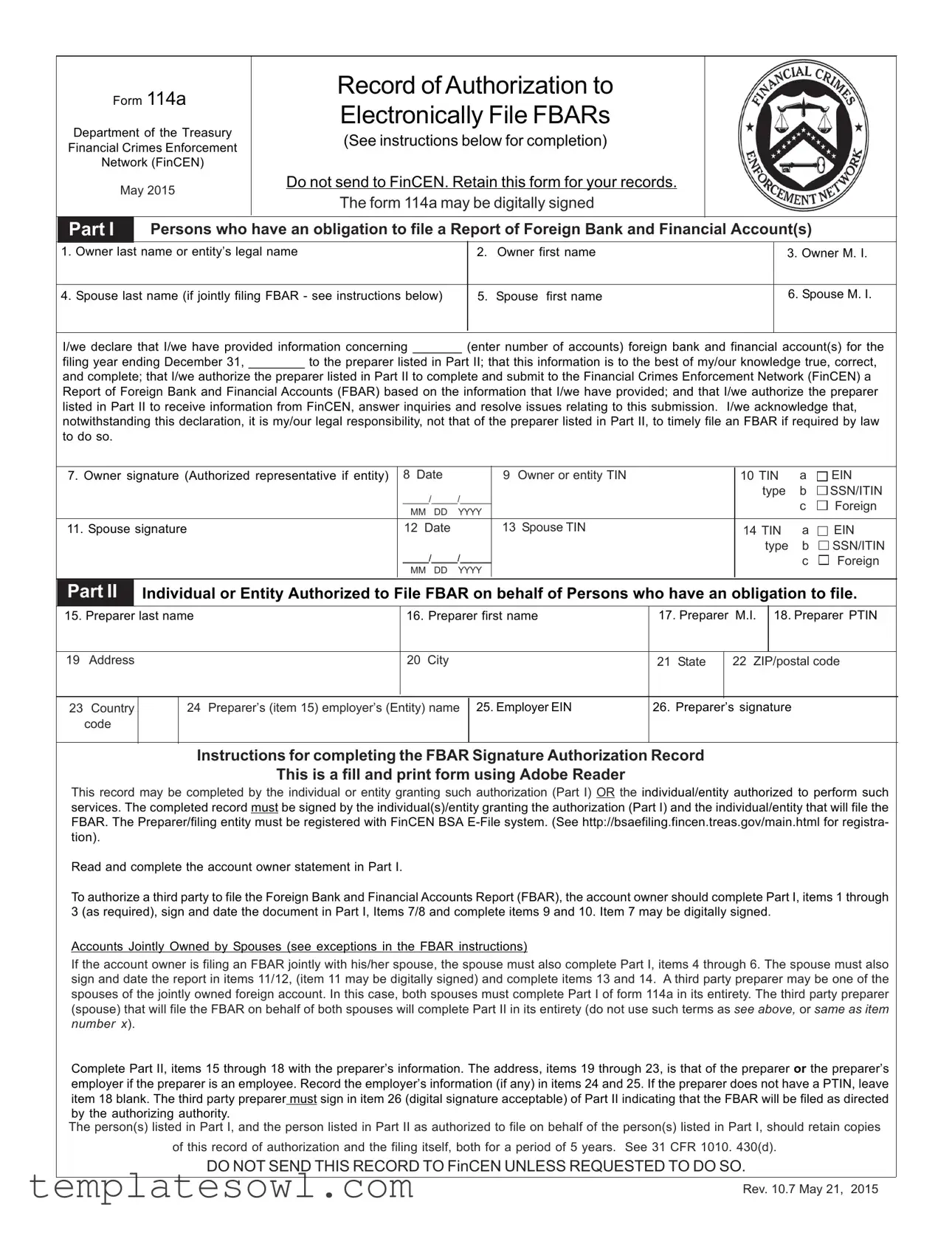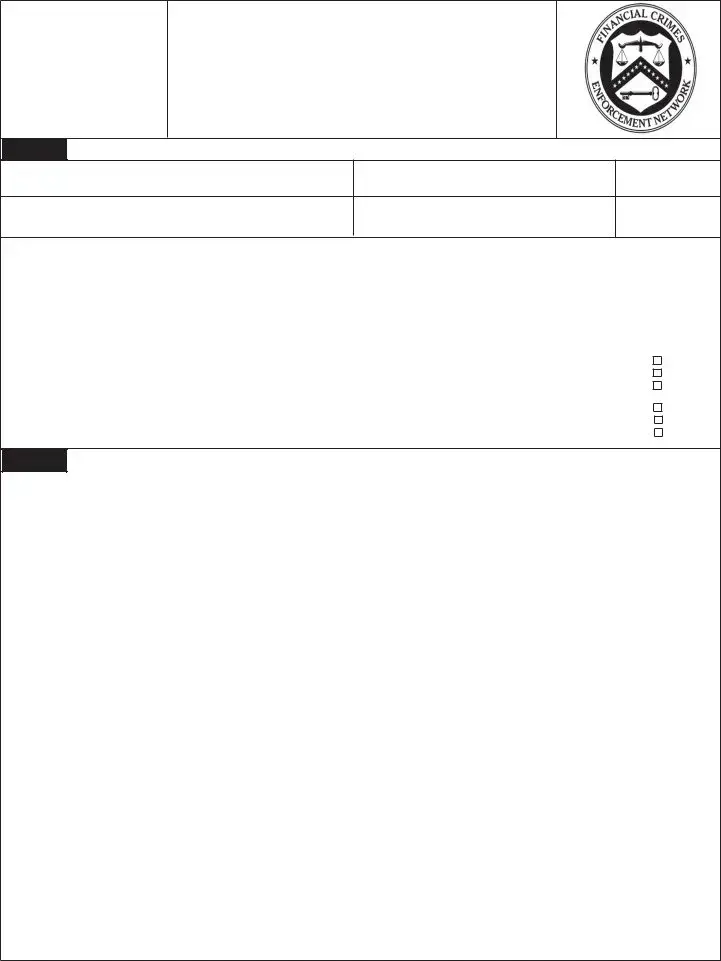What is Form 114A?
Form 114A is a document provided by the Financial Crimes Enforcement Network (FinCEN) that allows individuals or entities to authorize a third party to electronically file the Report of Foreign Bank and Financial Accounts (FBAR) on their behalf. This form is crucial for those who have foreign bank accounts and need to comply with federal reporting requirements.
Who needs to file Form 114A?
Individuals or entities with an obligation to file an FBAR must complete Form 114A if they wish to grant authorization to a preparer for filing. This includes anyone who owns or jointly owns foreign bank accounts that meet the filing criteria set by the IRS.
Can I sign Form 114A electronically?
Yes, Form 114A allows for digital signatures. This makes it easier for both account owners and preparers to complete and submit the necessary authorizations without needing to print and physically sign the form.
What information do I need to provide on Form 114A?
When filling out Form 114A, you will need to provide specific information including the names and TINs (Taxpayer Identification Numbers) of both the account owner and, if applicable, their spouse. Additionally, you must disclose the preparer’s information and the number of foreign accounts you’re reporting.
Is there a deadline for submitting Form 114A?
Form 114A does not need to be submitted to FinCEN itself; however, it is essential to have it prepared and signed before the FBAR deadline. The FBAR is typically due by April 15 of each year, with an automatic extension available until October 15.
What should I do with Form 114A once completed?
Once you have completed Form 114A and signed it, keep it for your records. You do not need to send it to FinCEN unless specifically requested to do so. It’s wise to retain this document together with any filed FBARs for at least five years.
Can one spouse authorize the other to file the FBAR?
Yes, if foreign accounts are jointly owned by spouses, one spouse can authorize the other to file the FBAR on their behalf by using Form 114A. Both spouses must complete the required sections of Part I, and the authorized spouse will complete Part II.
What happens if I authorize a preparer to file and they make an error?
While you may authorize a preparer to file the FBAR for you, you remain legally responsible for ensuring that the filing is accurate and timely. If any issues arise, it is your responsibility to address them, even if they stem from the preparer's actions.

